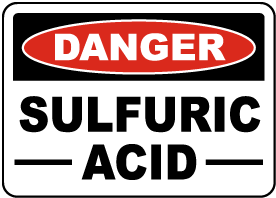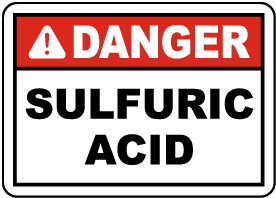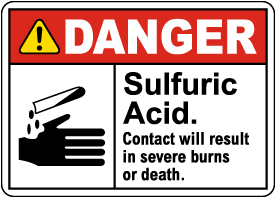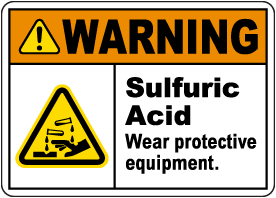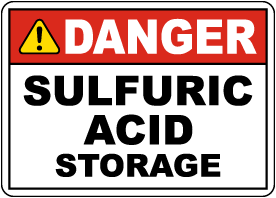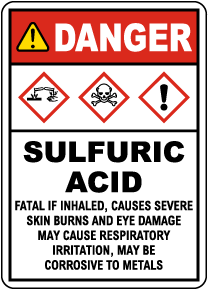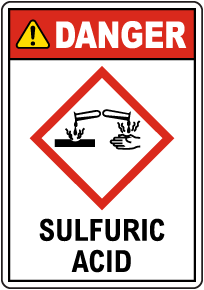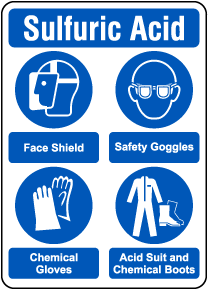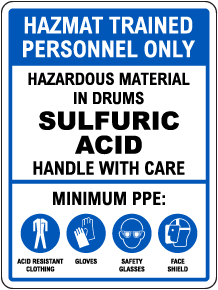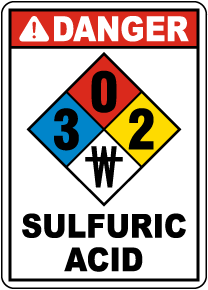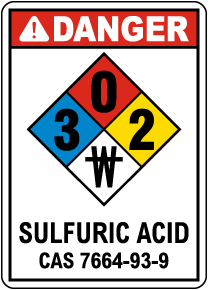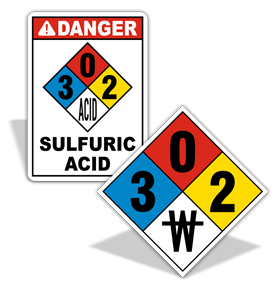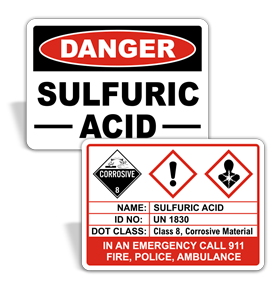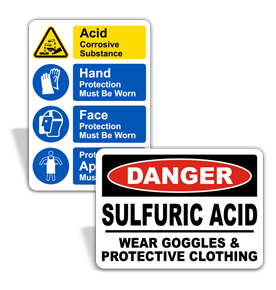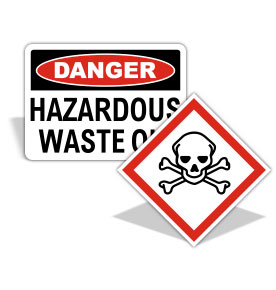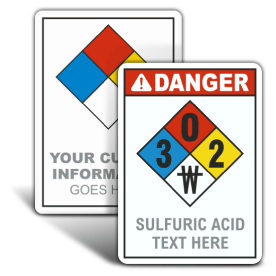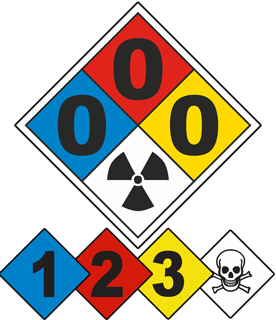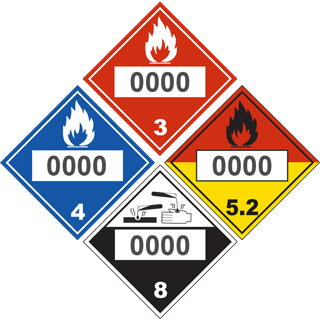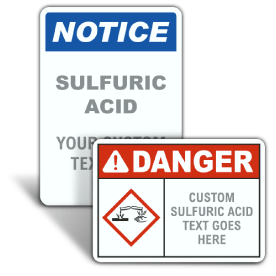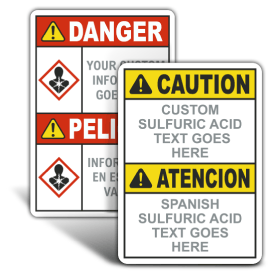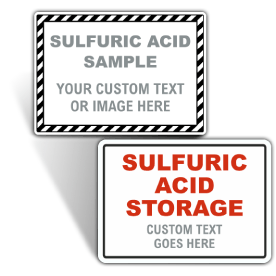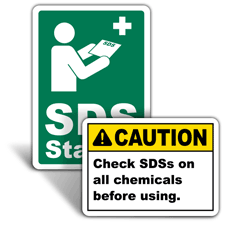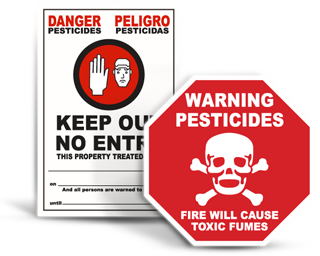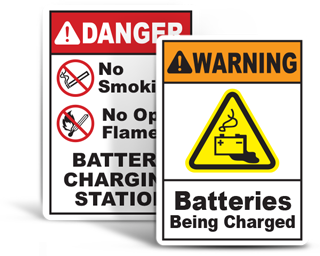Shop Our Wide Sulfuric Acid Sign Selection
Custom Sulfuric Acid Signs
Design your own Custom Sulfuric Acid Signs. Choose a template that fits your needs, then add your own text, image / logo or upload your artwork. Click on See All for more custom templates.
Other Categories You Might Be Interested In
What is Sulfuric Acid?
Sulfuric acid, also called oil of vitriol, is a colorless and odorless corrosive liquid. It is a very strong inorganic acid with qualities that make it very useful for a number of industries. Its primary industrial use is to make phosphoric acid which is a main ingredient in most chemical fertilizers. Sulfuric acid is a critical component for metal manufacturing, particularly in the production of copper and zinc as well as the cleaning of steel. Other uses include detergents, lead-acid automobile batteries, and other chemicals such as hydrochloric acid, dye, explosives, pigments, and drugs. Concentrated sulfuric acid is a strongly acidic material that reacts rapidly with water, evolving considerable heat.
Sulfuric acid is corrosive, and contact can severely irritate and burn the skin and eyes and may lead to blindness. Inhaling sulfuric acid can irritate the nose, throat, and lungs. Higher exposures may cause a build-up of fluid in the lungs (pulmonary edema). Exposure can cause headache, nausea, and vomiting. Repeated exposure can cause permanent lung damage, damage to teeth, and upset stomach. In addition, sulfuric acid is reactive and a dangerous explosion hazard. It is not combustible, but it is a strong oxidizer that enhances the combustion of other substances.
Fire Protection Guide to Hazardous Materials - Edition 14th
| Chemical Name / CAS No. | NFPA 30 / OSHA Class | Health | Flammability | Instability | Special Hazard | DOT Class | ID No. |
|---|---|---|---|---|---|---|---|
| Sulfuric Acid 7664-93-9 |
None | 3 | 0 | 2 | Class 8 Corrosive Material |
UN 1830 |
Why are there different ratings for Sulfuric Acid?
The other ratings that appear on this page, besides those listed in NFPA's Fire Protection Guide to Hazardous Materials - Edition 14th above, were found in other documentation. Sulfur Dioxide, for example, has different rating than Sulfuric Acid along with DOT identification number UN 1079 for transportation. Always consult your specific chemical's SDS for more information.
Learn more...The signs above represent our interpretation of material information in combination with NFPA 30 and NFPA’s Fire Protection Guide to Hazardous Materials. Without knowledge of your specific chemical, facility, or hazard, it’s impossible for us to guarantee these signs will match your situation. It is your responsibility to decide which signs are valid for your use and to comply with applicable laws and standards. This site is not intended as a substitute for expert analysis or professional consultation. We make no guarantee of the accuracy of the information on this site and assume no liability of injury or damage as a result of using our products.
